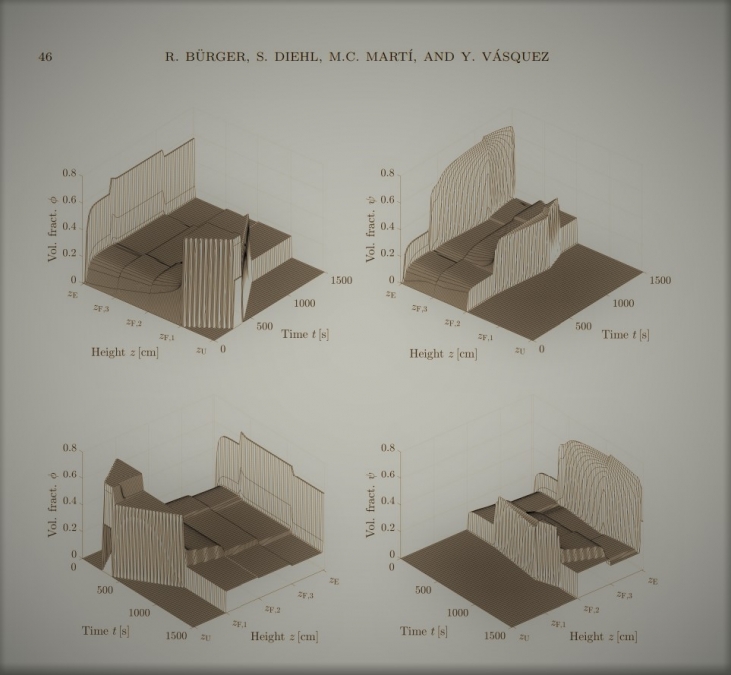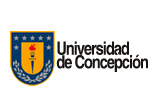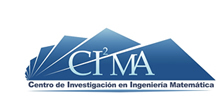News
The stay of Spanish academic was extended for a month and included various academic collaboration activities
Mª Carmen Martí Raga is an academician at the Universitat de València (Spain), where she completed her undergraduate studies and graduated with a PhD in Computational Mathematics, after which, in 2015, she moved to the Universidad de Concepción, UdeC, for a stay postdoctoral fellowship with Dr. Raimund Bürger, researcher of the Center for Research in Mathematical Engineering, CI²MA, which lasted until 2018.
Since then, both academicians have developed a productive trajectory of international scientific collaboration that also includes the researcher from Lunds Universitet (Sweden) Stefan Diehl. This collaboration allows the insertion of other researchers and, especially, undergraduate and postgraduate students, through the co-direction of theses and reports. “We have been able to continue developing the line of research on flotation models that we started with my post-doctorate.
An example of these collaborations is the thesis developed by Yolanda Vásquez in the Doctorate in Applied Sciences with a mention in Mathematical Engineering at the UdeC, a research project directed by Prof. Bürger, acting as co-tutors, Mª Carmen and Prof. Diehl and, Along the same lines, more recently, last June, the Iberian researcher visited the UdeC again, this time to participate in person in Romel Pineda's thesis defense of the aforementioned postgraduate program.
Regarding the dynamics of group collaboration, Mª Carmen explains that, generally, one of them raises a topic to be developed and they contribute visions and share out the work, depending on the availability of time and resources available to each one, and This naturalness of the process is what is producing spaces to collaborate with other experts and include students. “The topic is open and we continue to work on it and, as we progress, it also becomes more complex and opens up new potential lines of research”.
 “Specifically on the flotation issue”, she details, “we already have 6 or 7 articles published and we are working on the next one. Whenever, as in this case, we are presented with a real problem to try to model it with mathematics, at least the way in which we approach it is to gradually add phenomena and see how mathematics is capable of reproducing that and finding a numerical method that gives us correct solutions. Added to the equations, the results are also increasingly complex”.
“Specifically on the flotation issue”, she details, “we already have 6 or 7 articles published and we are working on the next one. Whenever, as in this case, we are presented with a real problem to try to model it with mathematics, at least the way in which we approach it is to gradually add phenomena and see how mathematics is capable of reproducing that and finding a numerical method that gives us correct solutions. Added to the equations, the results are also increasingly complex”.
From this collaboration, the researcher highlights the opportunity to guide new researchers who will later do the same with younger students. “Just as I was a student and did my post-doctorate, it is important to see how, for example, Yolanda is now an academic at the U. Tecnológica de Panamá,” he affirms, adding that “being able to direct a thesis on a subject you are working on and that you like is a very important opportunity and, furthermore, if the research goes well and results are produced, as in this case, you cannot wish for more”.
Mª Carmen -who teaches undergraduate students in Mathematics and Engineering, in addition to the Master's in Mathematical Research- explains that, due to the sanitary measures derived from the COVID pandemic, their interaction and participation in the development of Yolanda's thesis is They were carried out remotely and, for this reason, he values even more the opportunity to participate in person in the evaluation commission of Romel's presentation. “It was a very good experience, because it is the first time that I am a member of a commission as it is called here (in Spain, we say 'tribunal') in a thesis. It is good to see the process from the inside and contribute your opinion on the subject”.
Regarding a possible intersection between her own lines of research and the contents of the thesis developed by Romel, linked to sedimentation processes, Dr. Martí explains that, “in the end the process is very similar, although in sedimentation the action is in the direction of gravity and floating is the opposite, the processes are very similar. In fact, in what we are developing now, we are going to use a treatment like the one seen in this thesis. Thus, the experience as a commission also helped me to delve into this way of attacking some physicochemical processes, which can be useful for current research”.
In turn, Dr. Raimund Bürger comments that “it has been a pleasure to have Mari Carmen visit and share with us, remembering that she had been part of CI²MA for several years when she was a postdoctoral researcher. From the scientific point of view, important advances were made in the description of the bias flow in flotation columns, as well as in the formulation of numerical methods for the transport of liquid components, topics that we will continue to work on in the coming weeks in remote collaboration mode”.
In one of the last activities of her visit to the country, Dr. Martí gave the talk 'Numerical results vs. experimental data for a model of froth flotation with drainage', at the 2nd Workshop: Advances in mineral processing, bioprocesses and wastewater treatment, held at the U. de Talca, organized by the Anillo ACT210030 Project and sponsored by CI²MA, the Center for Mathematical Modeling and the Water Research Center for Agriculture and Mining .

